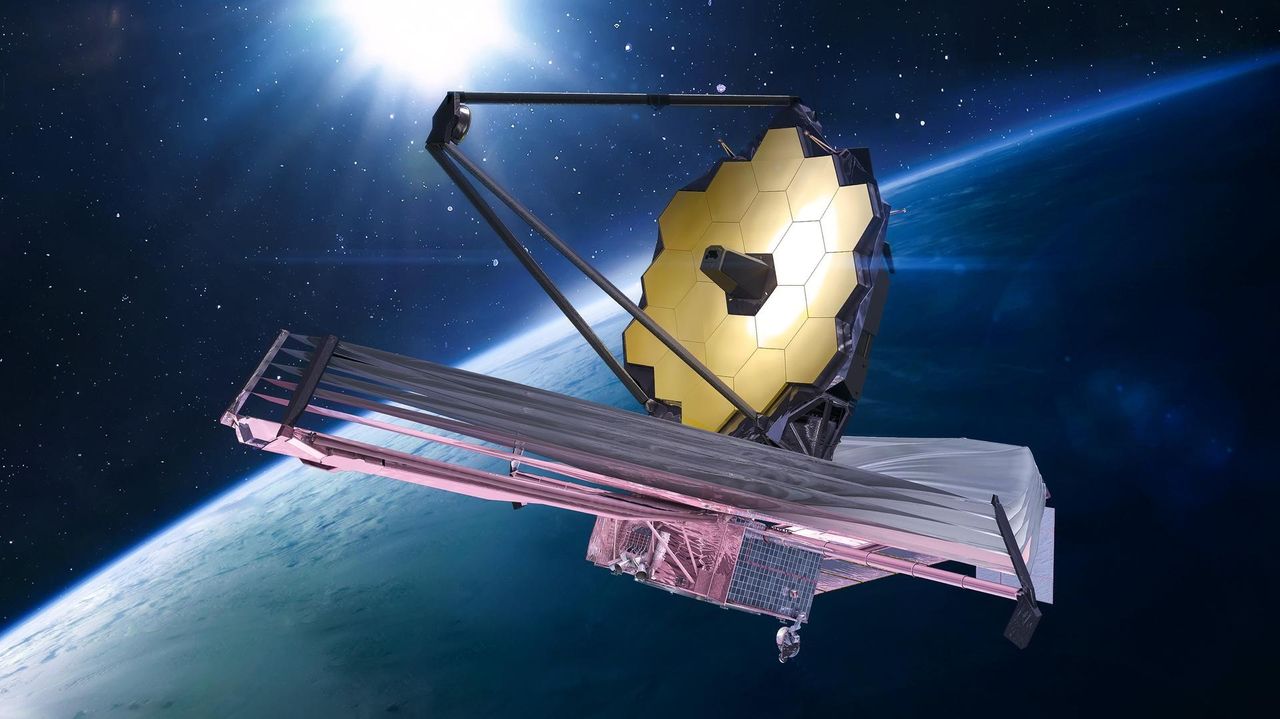
The second most distant object ever spotted by the James Webb telescope may be a ‘dark star’ powered by dark matter rather than nuclear fusion.
By looking at the wavelengths of light picked up by the James Webb Space Telescope (JWST), researchers have identified four dark star candidates — with one seemingly possessing a “smoking gun” helium absorption signature, the researchers reported in a study published Sept. 30 in the journal PNAS.
“Our initial name ‘dark star’ is a misnomer,” study co-author Katherine Freese, a professor of physics at The University of Texas at Austin who proposed the dark star hypothesis, told Live Science. “They’re neither made [entirely] of dark matter nor are they dark.”
Finding dark stars could explain some of the very puzzling objects that JWST has spotted in the early universe, such as the giant supermassive black holes that formed impossibly fast, Freese said. It would also provide insights into the nature of dark matter. “It’s a probe, not just a new kind of star,” she said, “so these candidates are very encouraging to us.”
To spot the potential dark star candidates, the team trawled through observations from the JWST Advanced Deep Extragalactic Survey (JADES). They focused on data collected by the Near InfraRed Spectrograph (NIRSpec): an instrument measuring the individual wavelengths of light coming from celestial objects to learn about their temperatures, masses and chemical fingerprints.
The researchers set various criteria in their search: the signals needed to be no younger than redshift 10 (a redward stretching of the universe’s ancient light corresponding to 500 million years after the Big Bang), could only contain hydrogen and helium, and had to be from a single object.
This led them to four dark star candidates: JADES-GS-z11-0, JADES-GS-z13-0, JADES-GS-z14-0 and JADES-GS-z14-1. JADES-GS-z14-0 is the second most distant object observed by JWST to date.
Signals from the first stars
Models of each candidate showed that all four could plausibly be dark stars, perhaps even supermassive dark stars.
The team also found hints of the “smoking gun signature” for supermassive dark stars in the JADES-GS-z14-0 wavelength data — singly ionized helium atoms absorbing light particles with a wavelength of 1640 angstroms (an angstrom is one hundred-million times smaller than a centimeter).
“No other known high redshift objects are expected to produce such an absorption feature,” the authors wrote in the study, adding weight to their suggestion that JADES-GS-z14-0 is a dark star.
The team were surprised to discover, however, that the Atacama Large Millimeter/submillimeter Array (ALMA) in Chile had detected JADES-GS-z14-0 emitting oxygen, an element only produced by nuclear fusion powered stars. “That worries me a little bit,” Freese said.
The team are now running simulations to determine how much oxygen is permitted before a dark star is no longer able to form, study co-author Cosmin Ilie, a physicist at Colgate University in New York, told Live Science. “Logic tells me that there should be sort of a transition,” he said.
Dark stars remain controversial and their existence is by no means accepted. “The majority of the Pop III star community actually doesn’t think that dark matter burners [dark stars] can form,” Daniel Whalen, a cosmologist at the University of Portsmouth in the U.K. who was not involved in the research, told Live Science.
In fact, Whalen said that a “huge issue” with this research is that it did not differentiate between dark stars and supermassive primordial stars. “That’s the elephant in the room really here,” he said.
Although the dark star candidates are more massive than most supermassive primordial stars, their wavelength data needs to be compared for both star types to rule out supermassive primordial stars, Whalen explained.
In response to this criticism, Ilie said that because supermassive primordial stars don’t live as long as dark stars, if many suitable signatures are identified they are statistically more likely to be dark stars. That means many more observations are needed to settle this mystery.
Meanwhile, Freese said that the team is working on automating the search for dark stars in the JWST data “so we don’t have to do anything except keep our eyes open.”
